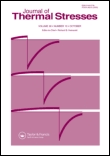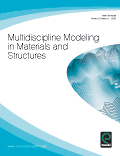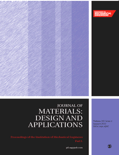
npj Computational Materials
Scope & Guideline
Innovating Through Computational Insights.
Introduction
Aims and Scopes
- Materials Discovery and Design:
The journal prioritizes studies that leverage computational techniques, including machine learning and high-throughput screening, to discover and design new materials with desired properties. - Computational Modeling and Simulation:
A significant aspect of the journal's scope includes the development of theoretical frameworks and computational models to simulate material behaviors at various scales, from atomic to macroscopic. - Interdisciplinary Approaches:
Research that integrates insights from physics, chemistry, and engineering to address complex materials problems is prominently featured, highlighting the collaborative nature of modern materials science. - Machine Learning and AI Applications:
The journal showcases innovative applications of machine learning and artificial intelligence in materials research, emphasizing their role in enhancing predictive modeling and optimization of materials properties. - Experimental and Theoretical Synergy:
Papers that bridge experimental investigations with computational predictions are encouraged, fostering a comprehensive understanding of materials phenomena.
Trending and Emerging
- Machine Learning and Data-Driven Approaches:
There is a significant increase in research focused on machine learning and data-driven methodologies to predict materials properties, optimize structures, and accelerate discovery processes. - High-Throughput Computational Screening:
The trend towards high-throughput computational screening of materials has gained momentum, allowing for rapid evaluation of vast materials databases to identify promising candidates for various applications. - Quantum Computing Applications in Materials Science:
Emerging interest in applying quantum computing techniques to solve complex materials problems is evident, with studies exploring quantum simulations to enhance computational capabilities. - Integration of Experimental Data with Computational Models:
An increasing number of papers are focusing on integrating experimental data with computational models to validate predictions and refine material design strategies. - Multiscale Modeling Approaches:
Research employing multiscale modeling approaches that connect atomic-level simulations with continuum mechanics is on the rise, reflecting a holistic view of materials behavior across different scales.
Declining or Waning
- Traditional Analytical Methods:
There has been a noticeable decrease in the publication of studies relying solely on traditional analytical methods without computational integration, as the field increasingly favors computational approaches. - Classical Molecular Dynamics Simulations:
The prevalence of classical molecular dynamics simulations has diminished as more researchers adopt advanced techniques like machine learning-driven simulations that offer improved accuracy and efficiency. - Empirical Potentials:
Research utilizing empirical potentials for materials modeling is becoming less frequent, with a shift towards data-driven and machine learning-based approaches that provide greater adaptability and precision.
Similar Journals

Materials Research Letters
Exploring New Horizons in Materials ScienceMaterials Research Letters, published by Taylor & Francis Inc., serves as a leading platform in the field of materials science, offering an open access format to enhance global research dissemination since 2013. With an impressive impact factor and ranking in the Q1 category for miscellaneous materials science, this journal ranks #57 out of 463 in the Scopus materials science categories, placing it within the 87th percentile among its peers. The journal aims to provide rapid publication of short communications that report on significant findings in all areas of materials research, thus fostering innovation and collaboration among scholars, professionals, and students alike. As a primary conduit for cutting-edge research and developments in materials science, Materials Research Letters is essential for those seeking to stay at the forefront of this dynamic field.

JOURNAL OF THERMAL STRESSES
Exploring the Dynamics of Thermal StressThe Journal of Thermal Stresses is a prestigious peer-reviewed journal published by Taylor & Francis Inc, dedicated to the exploration of thermal stress phenomena in materials and condensed matter physics. With a focus on enhancing our understanding of the implications of thermal stress on material performance and structural integrity, the journal serves as a critical resource for researchers and professionals alike. Established in 1978, the journal has a converged timeline extending through 2024 and is recognized in the academic community for its significant contributions, boasting rankings in the 69th percentile in Condensed Matter Physics and the 61st percentile in General Materials Science according to Scopus. Although not an open-access publication, it offers a wealth of valuable insights and advancements for those engaged in the study of thermal dynamics and related fields, affirming its role as a vital platform for knowledge dissemination among scholars and practitioners.

SADHANA-ACADEMY PROCEEDINGS IN ENGINEERING SCIENCES
Innovating Tomorrow's Engineering TodaySADHANA-ACADEMY PROCEEDINGS IN ENGINEERING SCIENCES, published by Springer India, is a highly regarded journal in the field of engineering sciences, focusing on innovative research within a multidisciplinary framework. With a history spanning from 1984 to 2024, the journal has established itself as a critical platform for the dissemination of groundbreaking findings, boasting a Q2 ranking in its category and a commendable position within the 76th percentile of Scopus rankings. Researchers and professionals are encouraged to submit their works and contribute to the continuous evolution of engineering disciplines, as the journal fosters collaboration and promotes scholarly dialogue. Although currently not classified as open access, SADHANA’s commitment to academic excellence ensures that it remains a vital resource for the global engineering community, enhancing knowledge transfer and inspiring future innovations.

Nature Computational Science
Empowering Research with Cutting-Edge Computational MethodsNature Computational Science, published by Springer Nature, is a leading peer-reviewed journal that plays a pivotal role in advancing the field of computational science. With an impressive impact factor and a strong ranking in Scopus, it holds a prestigious position as Q1 in key categories, including Computer Networks and Communications, Computer Science Applications, and Computer Science (miscellaneous). This journal provides a platform for the dissemination of innovative research that drives the development of computational methods and their application across various scientific domains. Emphasizing open access to foster widespread dissemination and collaboration, Nature Computational Science aims to bridge the gap between theoretical advancements and practical implementations, making it an essential resource for researchers, professionals, and students eager to explore the latest trends and breakthroughs in computational methodologies.

Multidiscipline Modeling in Materials and Structures
Innovating the future of materials science and engineering.Multidiscipline Modeling in Materials and Structures, published by EMERALD GROUP PUBLISHING LTD, serves as a vital platform at the intersection of diverse fields including materials science, mechanical engineering, and modeling and simulation. Since its inception in 2005, this journal has gained recognition for its commitment to advancing knowledge and innovation within these disciplines, boasting a commendable Q3 categorization across multiple fields as of 2023. With a robust Scopus ranking that places it in the top 60th percentile for both mechanical engineering and mechanics of materials, it stands as a credible source for researchers and practitioners seeking to stay informed on the latest methodologies and applications. The journal emphasizes the importance of collaborative approaches to complex problems in materials and structural analysis, aiming to foster interdisciplinary dialogue and generate impactful research outcomes. Although currently not open access, the journal offers subscription options that ensure access to cutting-edge studies and critical reviews relevant to professionals and students alike. Engaging with this journal not only enriches one’s understanding of the field but also contributes to the ongoing discourse and development of innovative solutions in materials and structural modeling.

Multiscale and Multidisciplinary Modeling Experiments and Design
Advancing interdisciplinary research for innovative solutions.Multiscale and Multidisciplinary Modeling Experiments and Design is a dynamic journal published by SPRINGERNATURE, dedicated to advancing the fields of applied mathematics, materials science, and mechanics of materials. With an ISSN of 2520-8160 and an E-ISSN of 2520-8179, this journal provides a platform for innovative research and multidisciplinary approaches that address complex modeling and experimental challenges from 2018 to 2024. Ranked in the Q3 quartile across its categories and holding respectable positions within Scopus rankings, it serves as a vital resource for researchers and professionals seeking to explore emerging techniques and solutions in their fields. Despite its recent inception, Multiscale and Multidisciplinary Modeling Experiments and Design fosters a collaborative environment for knowledge exchange, making it essential for anyone at the forefront of scientific discovery. Open access availability ensures that the groundbreaking research published within is accessible to a broad audience, promoting global collaboration and innovations.

Digital Discovery
Advancing Open Access to Chemical DiscoveriesDigital Discovery is an innovative journal published by the Royal Society of Chemistry, specializing in the rapidly evolving field of digital chemistry and computational methods. Launched in 2022, this Open Access journal allows unrestricted access to cutting-edge research, which enhances the visibility and dissemination of scientific findings. With an impressive Q1 category ranking in Chemistry (miscellaneous) for 2023, Digital Discovery stands out as a pivotal platform for researchers looking to explore the intersections of digital innovation and chemical sciences. The journal is dedicated to publishing high-quality, peer-reviewed articles that push the boundaries of knowledge in this critical area of study, making it an essential resource for academics, industry professionals, and students alike. Readers can access all articles freely online, promoting a collaborative and inclusive academic community.

Russian Physics Journal
Illuminating Contemporary Challenges in PhysicsRussian Physics Journal is a reputable publication in the field of Physics and Astronomy, published by SPRINGER. With its history dating back to 1990, it has provided a platform for disseminating significant research findings while fostering academic dialogue within the scientific community. The journal, identifiable by its ISSN 1064-8887 and E-ISSN 1573-9228, offers a diverse range of articles that cover various aspects of physics, although it currently holds a Q4 category ranking in the 2023 quartile system, placing it within the lower tier of its field. Researchers and students can benefit from its insights despite the journal's ongoing evolution, striving to improve its impact as it ranks #194 out of 243 in the General Physics and Astronomy category on Scopus. While the journal does not offer open access options, its archived content remains crucial for those seeking to enhance their understanding of contemporary physics challenges. Located at ONE NEW YORK PLAZA, SUITE 4600, NEW YORK, NY 10004, UNITED STATES, the Russian Physics Journal continues to play a role in the academic landscape, contributing to the body of knowledge that drives innovation and exploration in the physical sciences.

PROCEEDINGS OF THE INSTITUTION OF MECHANICAL ENGINEERS PART L-JOURNAL OF MATERIALS-DESIGN AND APPLICATIONS
Exploring the Intersection of Mechanical Engineering and Material SciencePROCEEDINGS OF THE INSTITUTION OF MECHANICAL ENGINEERS PART L-JOURNAL OF MATERIALS-DESIGN AND APPLICATIONS is a prestigious academic journal published by SAGE PUBLICATIONS LTD, focusing on the dynamic fields of mechanical engineering and materials science. With an impressive impact factor reflective of its rigorous scholarly contributions, this journal serves as a vital platform for the dissemination of innovative research and practical applications in materials design and engineering processes. Since its inception in 1999 and continuing through 2024, it has maintained a robust reputation, achieving a Q2 ranking in both Materials Science (miscellaneous) and Mechanical Engineering categories, as well as commendable Scopus ranks that place it in the top percentiles of its fields. Located in the United Kingdom, the journal encourages submissions from researchers and professionals who are seeking to advance their understanding of materials applications while fostering interdisciplinary collaboration. Although it currently operates under traditional access terms, the journal prioritizes impactful research that addresses contemporary challenges in design and manufacturing, ensuring that it remains a must-read for anyone invested in the innovations shaping our technological landscape.

Frontiers of Structural and Civil Engineering
Exploring New Frontiers in Architectural ExcellenceFrontiers of Structural and Civil Engineering, published by HIGHER EDUCATION PRESS, is a premier academic journal dedicated to advancing the fields of architecture, civil, and structural engineering. With an ISSN of 2095-2430 and E-ISSN of 2095-2449, this journal caters to the dissemination of high-quality research and innovative practices from 2012 onwards, highlighting important developments up until 2024. Ranked in the top quartile (Q1) for Architecture and Q2 for Civil and Structural Engineering in 2023, it holds an impressive Scopus ranking of #19 out of 189 in Architecture and #101 out of 379 in Civil and Structural Engineering, reflecting its impact and relevance in the scientific community. This journal invites contributions that demonstrate pioneering approaches, fostering collaboration among researchers, professionals, and students alike, and significantly contributes to the global knowledge base in the engineering disciplines.